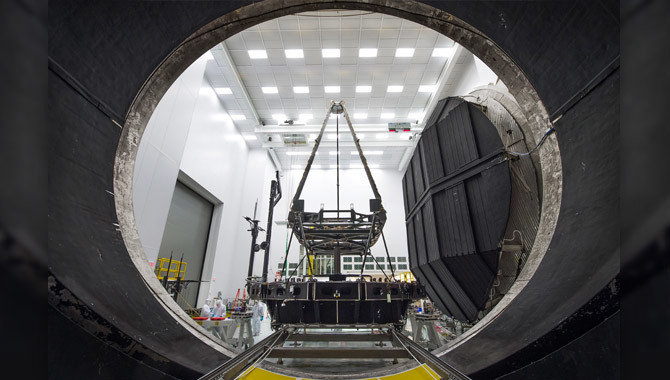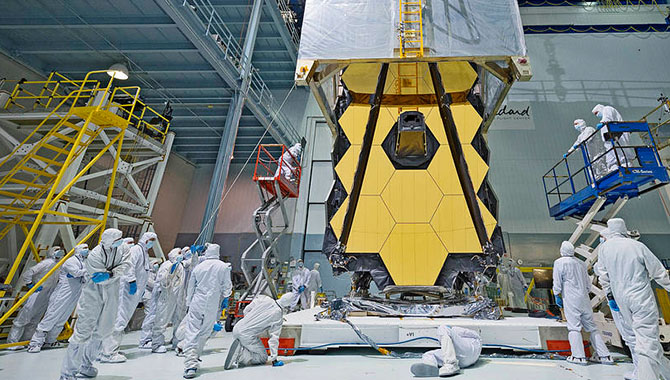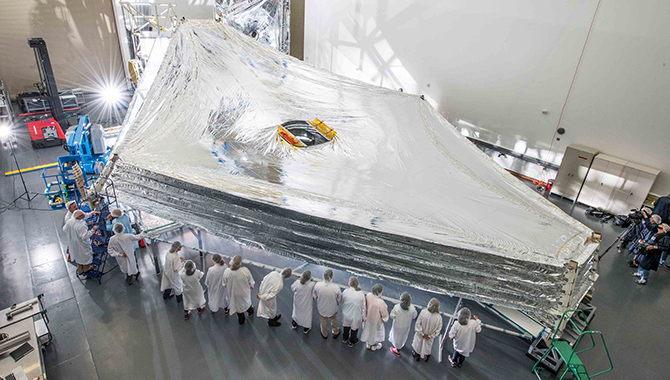
The Pathfinder, a test model of the James Webb Space Telescope, prepares to enter the giant thermal vacuum chamber known as Chamber A for cryogenic testing.
Photo Credit: Chris Gunn
As its 2018 launch approaches, the James Webb Space Telescope (JWST) continues to progress on schedule, according to a report by the Government Accountability Office (GAO).
The purpose of the JWST is to help humankind better understand the cosmos and our place in it. Designed to function as a “time machine,” the JWST will look back over more than 13 billion years to explore every phase of the formation of the universe, from the first stars to the origins of life on Earth.
Given its bold scientific goals, the JWST is one of the most complex and expensive projects at NASA. In 2015, GAO found that the project made good progress in building, integrating, and testing key components. It is now expanding that effort further to encompass five major integration and test events. During this phase, the project will also need to address more than 100 technical risks while fully examining all potential areas associated with mission failure.
According to GAO, the project remains on schedule and on budget for the work ahead. The project retains nine months of schedule reserve, which is above its schedule plan as well as the Goddard Space Flight Center (GSFC) requirement. GAO, which conducts an assessment of the JWST each year, cautions that the amount of reserve is limited for each of the project’s elements and major subsystems. To address these limitations, GAO encourages the project to obtain more reliable data from contractors to ensure that all estimates at completion (EACs), which are updated monthly, are realistic and incorporated into the status of the budget.
Overall, GAO notes that the project’s cost risk analysis is in line with best practices for cost estimating but encourages the agency to periodically update the analysis as risks change. In addition, GAO recommends that the project receive an explanation of all anomalies in contractor-delivered monthly earned value management (EVM) reports. Establishing an independent surveillance mechanism to examine anomalies in contractor-provided data could better support decision making. The agency concurs with the recommendations in the GAO report.
Read an APPEL News article about the 2014 GAO JWST assessment.
Watch a video showing the installation of the first mirror on the JWST.









